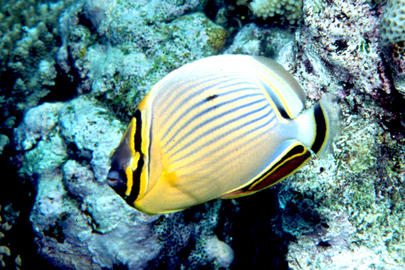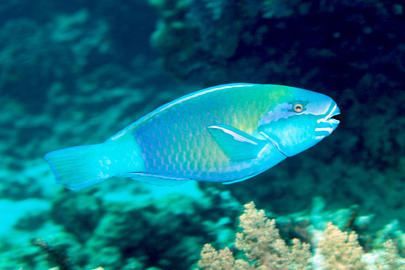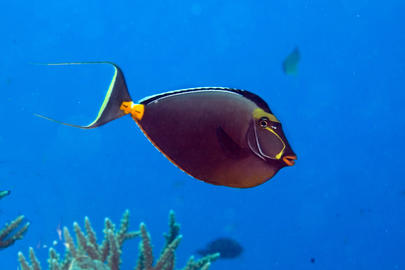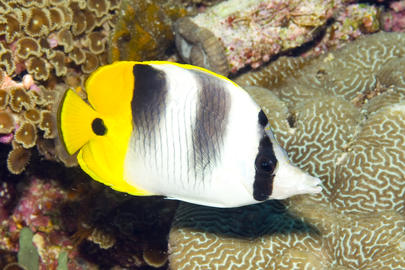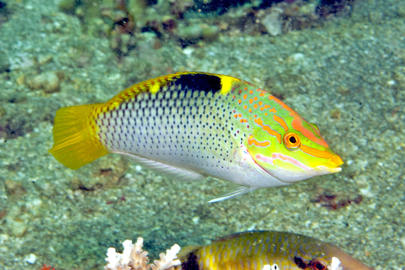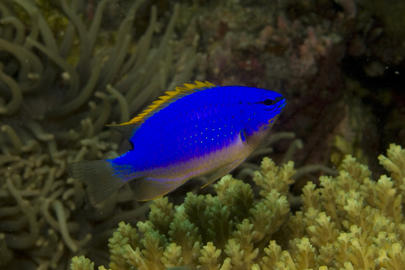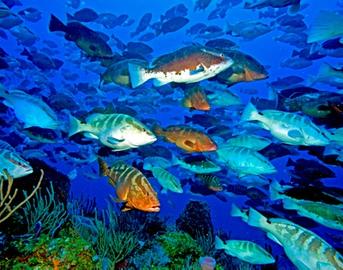The redfin butterflyfish is orange-yellow in coloration and has purple oblique stripes. Its anal fin is reddish in color. Both the base of the anal fin and tail fin are lined with a black band.
Many of you know that REEF helps out sea-dwelling creatures, but you may not know that we also help prepare our future land-dwelling leaders to deal with issues facing our marine ecosystems. Meet the faces of our Marine Conservation Internship Program! Every four months, REEF invites hundreds of applicants to compete for four internship positions. The chosen interns implement community outreach and education programs focused on reef fish identification and lionfish handling and collection. Interns also dive and volunteer with partner organizations in the Florida Keys.
The bullethead is identified by its symmetrical bullet-shaped head; the area above and below the beak-like mouth is the same. The TP is variable in coloration but will generally have a green body with lavander scale edges and some orange or yellow wash on the sides or cheeks. The key markings on the very different looking IP are the light head, dark body, often with rows of small white spots on the back part of the body and/or a pale tail that has a dark spot in the center.
This bannerfish can be distinguished from other species in the area by the hump on the head. Also, the humphead bannerfish has two white bands that frame a brown triangular area on the body.
Unique to this species of surgeonfish are the orange tail spines and anal fin. The orangespine unicornfish is brown or gray in coloration, has a yellow forehead, and a black band at the base of the dorsal fin. Unlike some other species of unicornfish, this species lacks a horn. Males will develop long trailing filaments from each corner of the tail.
A pair of wide, black, diffuse bars, or “double saddle”, is how you can distinguish this butterflyfish from others. The Pacific double-saddle butterflyfish is white with thin, black lines on the body. The back fourth of the body is bright yellow and has a black spot at the base of the tail fin.
Dark brown to black with rear body white that extends from the dorsal and anal fins. Black spot covers pectoral fin base.
Both TP and IP individuals have green and orange/pink lines on the face and head. The back half of the body in both phases is light greenish blue and each scale has a dark blue bar, giving the fish a distinctly “checkerboarded” look, but this is not very obvious. A distinctive key for this species is the yellow blotches just under the dorsal fin, you can think of these as checkers.
Blue with a few scattered white spots. Yellow to transulcent fins. Yellow to white belly. Males have pale patch on upper tail base. Females have black spot on below rear dorsal fin.
On behalf of the REEF Staff and Trustees, I want to thank all the donors from our Winter Fundraising campaign who helped us reach our target goal. With your help, we can continue REEF's core conservation programs, such as fighting the Lionfish invasion in the Caribbean, protecting Grouper spawning aggregations, collecting data through our Volunteer Fish Survey Project, and providing free online "Fishinars" to the general public and fish experts worldwide.

